Real-time technology has not been around for long, but in the short time of its existence, there have been major changes and improvements. As the market continues to demand innovation, we can see the potential for greater things coming soon.
The History of Real-Time Temperature Loggers
In the modern logistics world, real-time tracking of trucks, ships, and containers has become popular with the international rollout of the Global System for Mobile Communications (GSM) network. Early devices operated in a public network. When using the GSM (2G) network, there were several problems.
- High battery consumption resulting in bulky devices and short battery life
- Lack of standardization in roaming and SIM card handling
- Lack of an international standard for airline approvals
As a result, those devices were dedicated to a local trucking market or to the maritime market, transmitting values from ocean containers to proprietary antennas on ships. One of the first companies to launch a true international real-time temperature and location-tracking logger was a freight express company operating a fleet of aircrafts. The price for one device was higher than $1,000 per device – not including the connectivity and roaming.
Later devices used the 3G/4G network, which meant a significant reduction of battery consumption. Powered by lithium batteries, they achieved a battery life of 30 or more days. To get airline approval, they had to be multi-sensor devices monitoring all kinds of parameters like pressure, acceleration, and light. Using lithium batteries (other than button cells) became a new problem in 2017. The International Air Transport Association (IATA) released a regulation limiting the number of lithium cells per handling unit and requested declaration of each data logger sensor used in a shipment. This was another drawback of real-time temperature loggers.
Now, real-time data loggers provide a longer battery life than before, are IATA compliant, track location, and use 4G LTE mobile networks and new NB-IoT technology. The internet of things (IoT) is a network of physical objects, which exchange data with other systems and devices through the internet. These “things” use sensors, software, and other technologies to collect and transfer data over a network without requiring human-to-human or human-to-computer interaction.
Are all wireless technologies part of the IoT?
Following the definition above, the devices must have the capability to transfer the data over a network without requiring human interaction. Two characteristics determine the degree of fulfilment whether a solution belongs to the IoT:
1. Is the wireless technology based on a proprietary or a standard protocol? A proprietary protocol has security advantages, but it means that software is required.
2. Does the antenna network use a private or public antenna network? Public antenna networks have the advantage to reach a much wider coverage compared to private networks.

The Communication Networks Glossary
Real-time tracking and temperature & humidity monitoring of temperature sensitive products is a fast evolving business. To keep up, we must understand communication technologies and new terms as they arrive. Let us start with learning about current terminology and differences between communication networks.
GPS
The Global Positioning System (GPS), originally called NAVSTAR GPS (Navigational Satellite Timing and Ranging – Global Positioning System), is a satellite-based system owned by the government. GPS always consists of two elements: A special GPS-antenna, which is built into a device, and satellites, which are circling around the world and sending out radio waves. The GPS antenna inside the device is receiving signals from different satellites in reach and can calculate the position (1-5 m) of the device. GPS is a “one-way-system” – so it is not possible to talk to the satellite or transmit data back to the satellite. Most mobile phones contain a GPS chip used to determine the position. GPS chips consume quite a large amount of energy. Therefore, they are not suitable for small cargo trackers operating over several months.
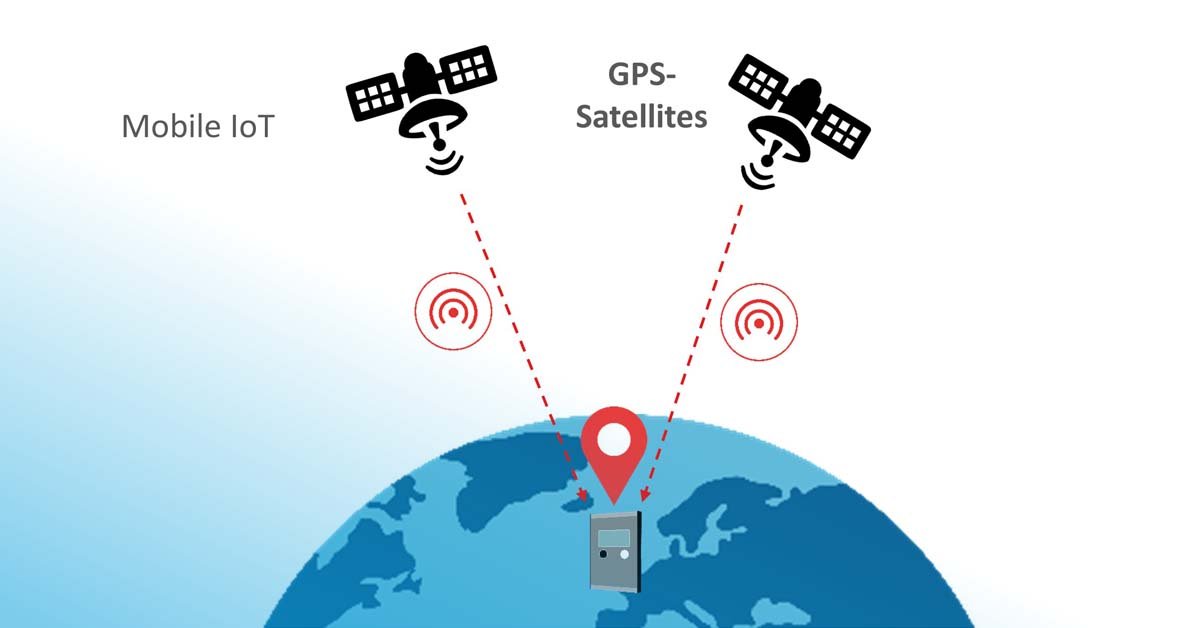
GSM (2G)
The Global System for Mobile Communications (GSM) is a standard developed by the European Telecommunications Standards Institute (ETSI) to describe the protocols for second-generation (2G) digital cellular networks used by mobile. GSM (or 2G) consists of an antenna network, which is typically installed on dedicated antenna towers along the highways and on hills and also on buildings, bridges, etc. The GSM antenna network was built specifically for mobile phone communication. Power consumption is significant (short battery-life). In many countries, the GSM (2G) and/or the 3G network will be shut down since it is being replaced by newer technologies.
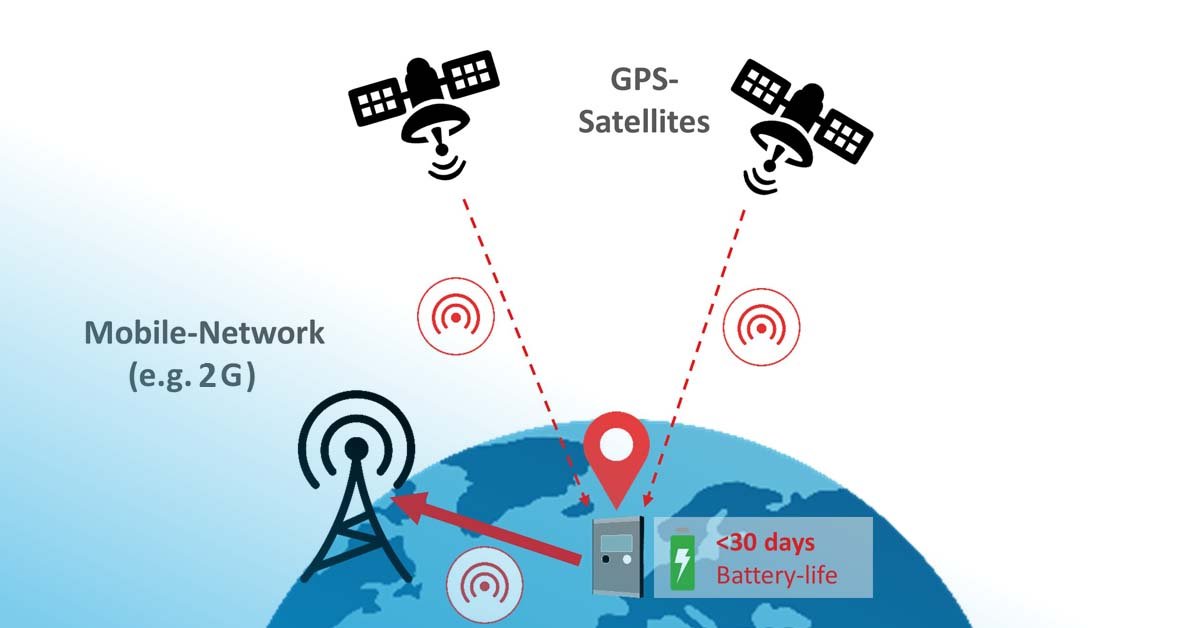
GSM (3G/4G)
Today, new standards have been set by the 3rd Generation Partnership Projects (3GPP), a global consortium of seven national telecommunication standards organizations. They include third-generation (3G) Universal Mobile Telecommunications System (UMTS) standards, followed by fourth-generation (4G) LTE-Advanced standards. They are both mobile communication standards and are used to describe the antenna networks and systems provided by telecommunication companies. Compared to 2G, 3G/4G networks are better suited for large amounts of data (smartphones used for internet access and consuming videos) at the same time using less battery.
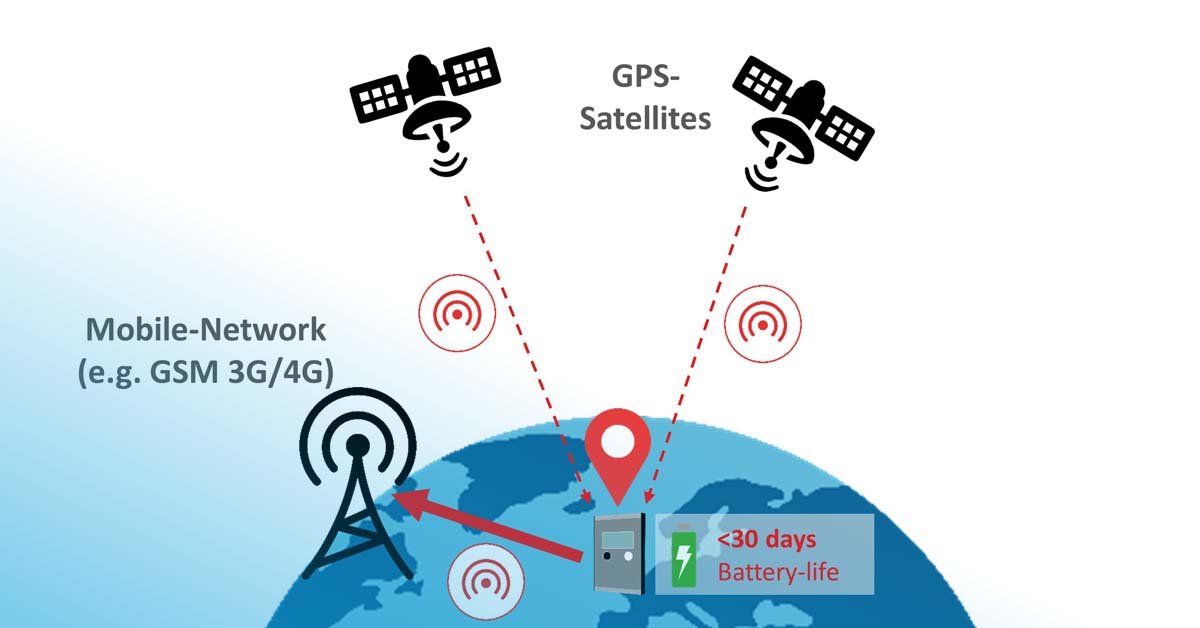
LPWAN/Mobile-IoT
LPWAN also called “Mobile-IoT” is a secure, operator managed IoT network in a licensed spectrum defined by 3GPP. The two protocols LTE-M (for mobile applications) and NB-IoT (for deep penetration into buildings) are designed for the IoT applications that are low cost, use low data rates, require long battery life, and often operate in remote and hard to reach locations. LPWAN networks are not suitable for smartphones, SMS message, voice-calling, and access to the internet. They are often rolled out in parallel to the 4G networks and will be used in the coming years by billions of devices communicating over the IoT in a variety of applications.
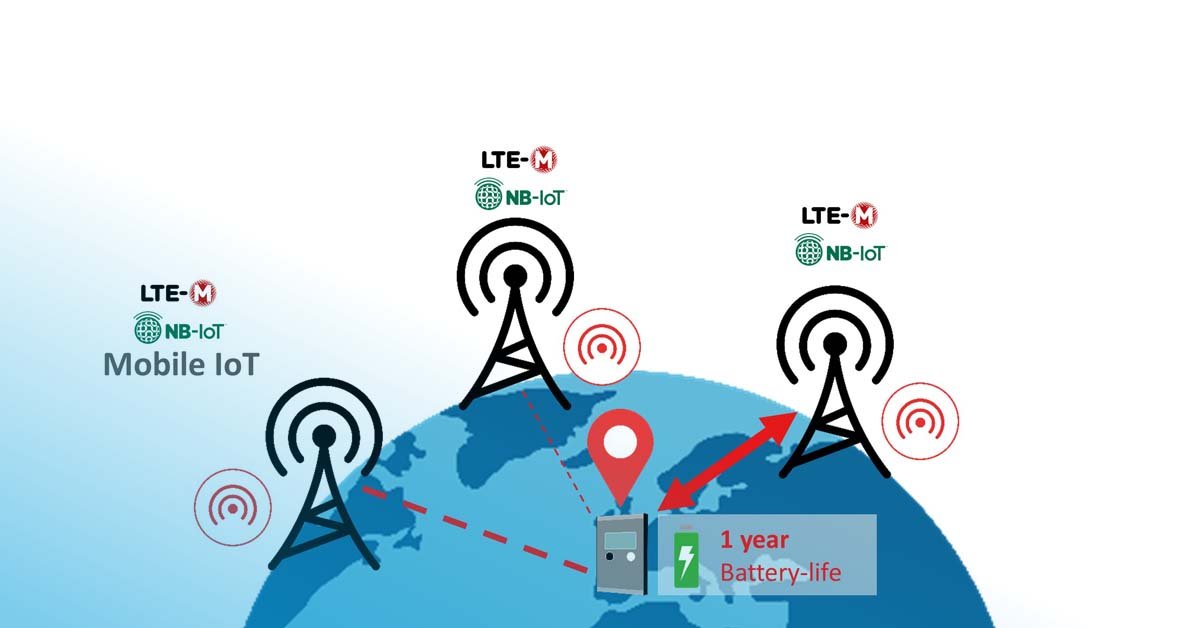
The Benefits of LPWAN Technology
Cost Efficiency
LPWAN is an international standard where many companies are investing. Microchip manufacturers are continuously developing new platforms. Telecommunication and network companies are rolling-out an international network with roaming contracts. Competition and economies of scale are bringing down the cost of components and the communication/roaming – resulting in a lower cost compared to previous technologies.
Low Power
Devices using LPWAN include two protocols, both optimized for the respective purpose.
- The LTE-M protocol is optimized for “moving” applications – a data logger or tracking device, which is continuously changing its position. One of the main strengths of this protocol is the optimized antenna handshake resulting in reduced power consumption compared to other protocols.
- NB-IoT is optimized for stationary applications –data loggers included in a warehouse, refrigerator, or cellar. The technology is developed to provide extended coverage –specifically indoors. Both protocols are designed to save energy and increase battery life more than traditional tracking and real-time monitoring devices.
Devices can typically be preprogrammed for either LTE-M or NB-IoT (depending on the application and country) or can switch between the two protocols during operation.
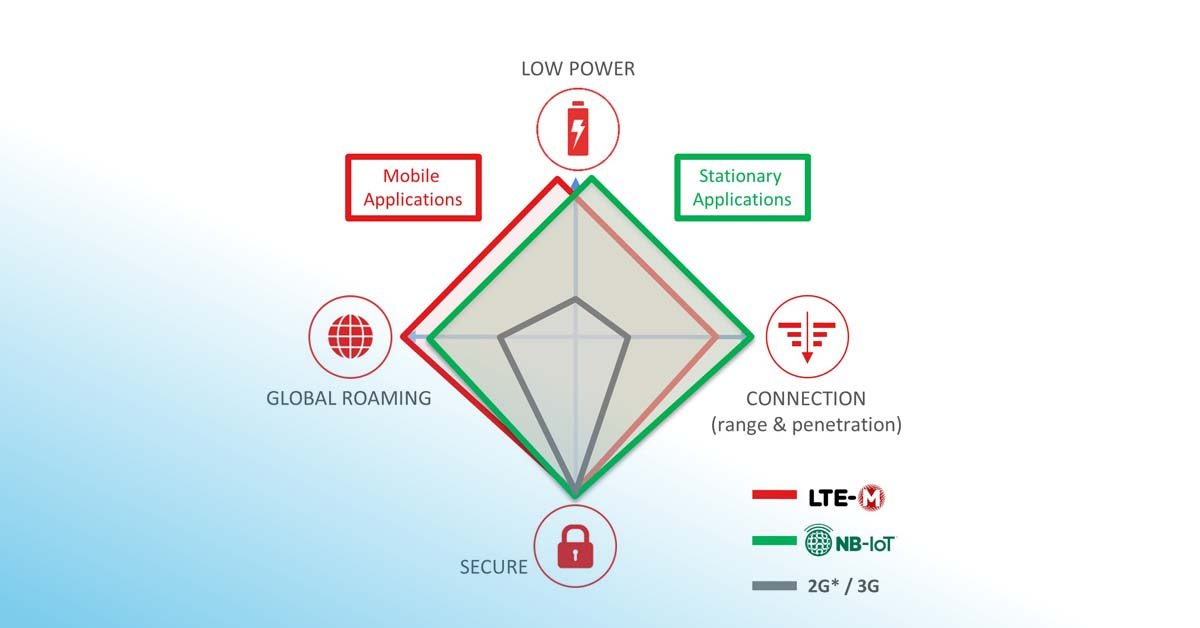
Position Precision of GPS vs. Triangulation
Dedicated GPS chips provide users with positioning, navigation, and timing services, supporting your car navigation through traffic and supporting your smartphone apps if they need to know the exact position. GPS chips determine the position using satellite signals. They can provide accuracy within one meter. However, the downside of GPS is it is relatively expensive and consumes a lot of power.
The alternative method of tracking location is cell tower triangulation of available network antennas. Depending on the number of antennas within a device’s reach, the accuracy of the position can be within 2 kilometers or 10 meters.
Research with cargo logistics companies tracking assets, as well as with pharmaceutical companies shipping highly sensitive and valuable goods, has shown that accuracy of the position is not a highly relevant factor.
Using the position for early intervention: Supply chains are complex and often include many different steps and service providers. It is less important to know exactly where the shipment is (in coordinates precise to a pallet position) than to have an escalation process to the right employees at the right place (e.g., Swisscargo in Chicago, phone number), since they will know the exact location of the affected pallet or container.
Using the position for taking actions on geo-fences: State-of-the-art tracking and real-time monitoring solutions have the capability to use geo-fences as triggers, like setting the start or stop time stamp, or sending a notification if it leaves a defined place. It is sufficient to know that a product has arrived at its destination. It is not necessary to know the exact ramp where the truck is unloading.
Using the position for heat-maps: Big data consisting of billions of datasets from thousands of shipments taking place along the same routes can be used for generating heat maps. For example, what is the airport where the most temperature deviations occur? Again, this is not a question of the exact position. An approximate position from a triangulation is sufficient.
Using the position for insurance cases: In the event of a major temperature deviation, the product owner might face an insurance case. The main question in an insurance case is who had custody of the product when the deviation occurred. This is a question of time and position. In most cases, a triangulated position is acceptable.
 Advantages of Real-Time Monitoring for Cold Chain
Advantages of Real-Time Monitoring for Cold Chain
Download our FREE infographic.
Future Technology: Is Serialization a Solution for End-to-End Temperature Monitoring?
The problem of counterfeit has received a lot of attention in the past few years. The EU's Falsified Medicines Directive (FMD) is defining serialization as a prerequisite for market authorizations since February 2019. Due to this initiative, each single product unit must carry a unique serial number as a standardized barcode refers to additional information (such as batch, production date, etc.).
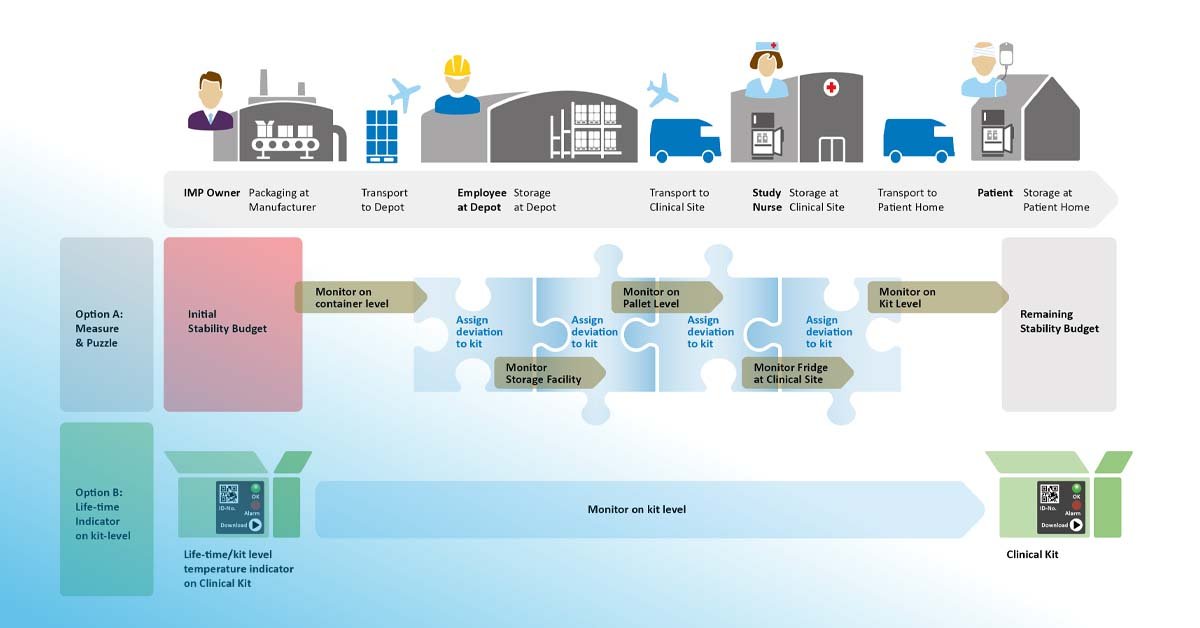
In the scenario above, single product boxes are aggregated to higher levels of packaging (product-box -> sales-unit -> pallet -> delivery unit). Each respective level has a printed barcode and is captured in a database. A central serialization database – such as Tracelink, now knows exactly which items belong where.
Challenges with Track & Trace
GS1 is a non-profit organization that developed and maintains global standards for business communication. They want to track aggregated units (e.g., sales units) along the supply chain and exactly where the box has been. If we would add the respective temperature measurement into this global database, we would easily be able to monitor all relevant information at any time in the supply chain.
Is the product in my hand an original (non-counterfeit) product?
Is the product in my hand ok to use (is the total time out of refrigeration this product has experienced so far, inside the defined stability budget)?
The problem: At this point, implementation of interfaces between ERP systems within the supply chain would be complex and expensive.
The solution: Ultimately, we can take two different approaches in addressing the end-to-end monitoring challenge:
- Option A – Measure & Puzzle: Monitor temperatures in the different handling-units, pallets, and boxes following the supply chain, and use a database to aggregate all the information.
- Option B – Life-time indicator on box level: Attach an electronic temperature indicator to each product box staying with the product at all time, accounting the total time out of refrigeration (TOR) from the allowed stability budget and indicating if the product is ok to use.
By allowing a download on the electronic indicator and connecting to the serialization database, we could even connect the two worlds:
1. The serialization database (e.g., Tracelink) knows if the product is an original. Eventually, the database also knows additional aggregation information or even tracking & tracing information.
2. The electronic box-level temperature indicator knows if the product is OK according to its stability budget.
The electronic box-level temperature indicator has a smartphone app that can now combine both pieces of information: if it is original and if the drug is safe.
 Clinical Trials and DtP Kit Level Monitoring
Clinical Trials and DtP Kit Level Monitoring
Find your monitoring options on our FREE white paper.
A New Approach for Temperature Monitoring in a Changing Clinical Supply Chain Environment
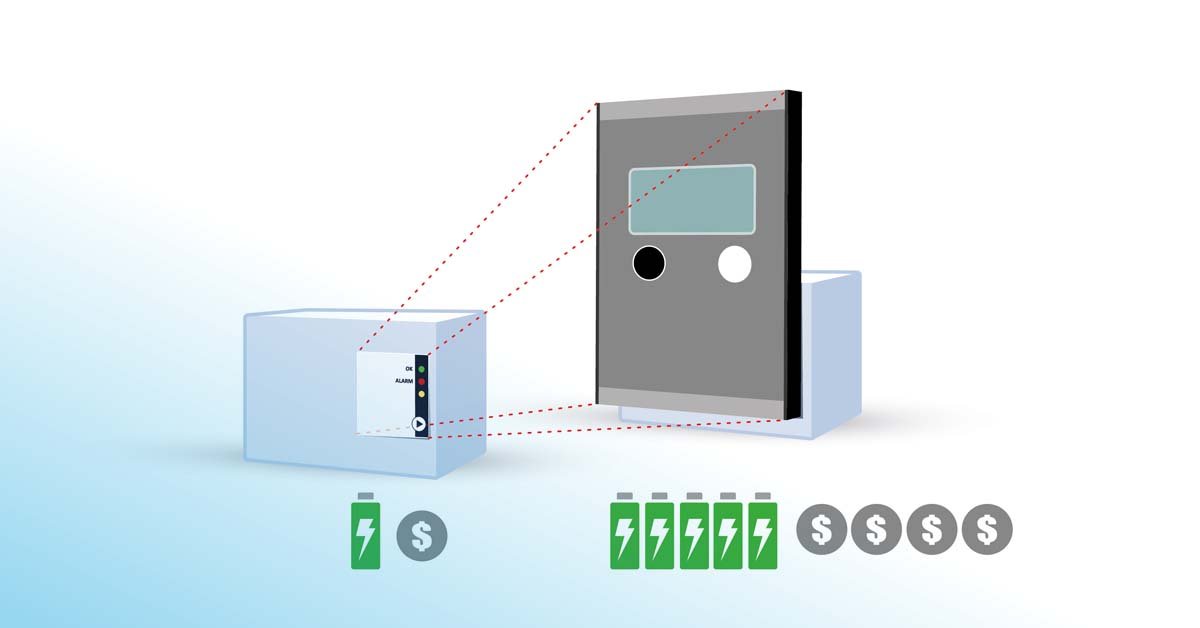
The Ultimate Dream–A Box Level Real-Time Device
We want a box/kit/vial level device that has battery life for the entire lifecycle (e.g., 2+ years). We want it to measure temperature and manage stability budget end-to-end, and transmit this data wirelessly to a cloud database, so the user knows at all times where it is geographically. The cloud database would send a notification for temperature deviations, identify who was responsible for the deviation, prevent deviations by proactive interventions, automate release at each handover-point, and even automatically manage stock at the hospitals/pharmacies.
Walt Disney once said, “If you can dream it, you can do it;” however, a box level real-time device is technically not possible at this time. Although Mobile-IoT networks are developing fast, the communication chips as well as the roaming cost are still too impractical to be applied on a box level. The Mobile-IoT communication chips still need a large amount of energy to communicate with nearby public antenna networks. If we would try to cover a lifespan of 2+ years, we would need a battery pack too large to reasonably fit a small box/kit.
However, there is increasing discussion around gateway concepts. So a larger unit (e.g., box) is equipped with an IoT-gateway, which is communicating via Bluetooth® to mini-sensors sitting on vials in the same box. Time will tell if this advancement will one day become a reality.


